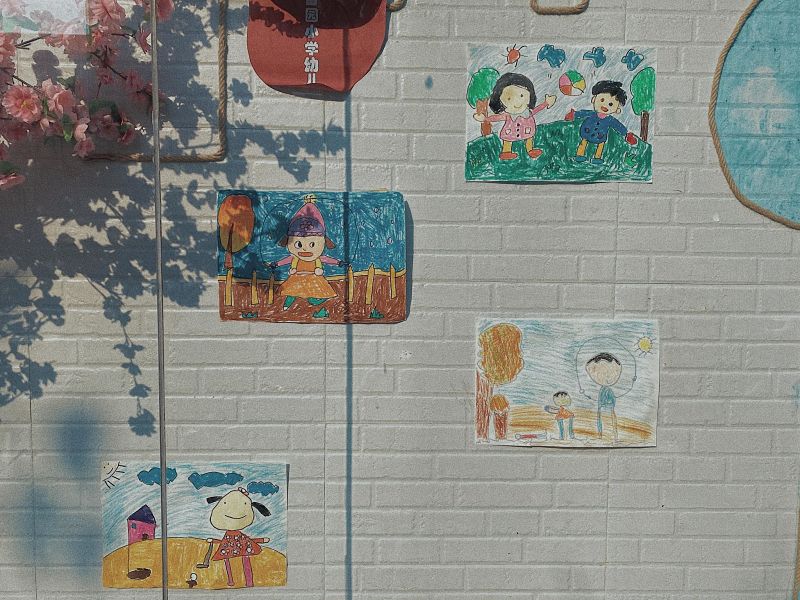Setting the Tone: Classroom Walls
 Photo by Cheng Qi Huang on Unsplash
Photo by Cheng Qi Huang on Unsplash
In this mid-summer moment, my classroom looks like a disorganized storage room. Opening the door is a chore, not an invitation of welcome. The walls are either bare or have bits of last year hanging on them. There are boxes of workbooks sitting there for the next term. I was gifted some “might be of use” items that clutter the floor waiting for proper dispersal. The one bright spot is the comments left on the white board from the last day of school—the ones that say, “Thank you for teaching me.” None of this says welcome back to a new term. It does say that it is summer vacation and it will need to change.
Our walls and room organization say a lot about our classroom atmosphere and our attitudes towards academics and our students. There are many subconscious messages that speak into the tone of our year. When you walk into a classroom you already have a sense of what is happening in that room.
- You should be able to tell the approximate grade level of the classroom.
- You should know what kind of material is being taught. Is this a high school math classroom or a first-grade classroom?
- Hints of the teacher’s personality are on display. Are they well-organized, or haphazard? Are they teaching because they love content or love personal interaction with students? Can you guess their favorite subject to teach? Is teaching a main focus of their days or are there other things more important? Are they spontaneous or stuck in a groove? Are they lovers of knowledge? Are they pack rats?
- You should be able to get an idea of the attitude of inhabitants of the classroom. Are they there to learn? Or to have fun? Or just because the state requires that they fill a seat in the room?
Many beginning teachers focus on their classroom décor as they get ready for school. Our walls and bulletin boards are tangible things we can see and do something about. Classroom management and teaching lessons are vague ideas for teachers who don’t know exactly what they are doing or should be doing. Getting the classroom ready by creating themes and displays is not wrong but these should be more than just tasteful decorations. We set the tone for our year with how we arrange our classroom.
- Think about what you want to say. You should create a tone that says, “Learning is interesting. Knowledge is valuable. School is work. We work hard to be successful. Success is satisfying.” Write down what you want your classroom to say about you and what you expect from your students. Use this statement to guide your choices on how you set up your classroom.
- Speak to the level of your students. The cutesy themes of grades one and two don’t belong in high school classrooms.
- Don’t be pressured to go with a theme. I find themes difficult to use. Other teacher friends find themes freeing.
- Make displays work for you. Use your bulletin boards to expand on subject material or to display student work. Your walls should have charts and graphics that aid the student learning. A visual aid is an excellent review tool.
- A list of student names on a markable wall chart or a corner of the blackboard is a handy organizational tool in my first-grade classroom. I use certain markers to show who is the line-leader for the day. I use it to keep track of rule infractions. A smile after a name might mean recognition for neat work.
- Keep the visual clutter to a minimum. If it is just an accessory, maybe it isn’t needed. We can’t handle too much sensory overload. Clutter makes the important blend with the unnecessary.
- Our walls can be distractions as evidenced in the anecdote from a co-teacher’s classroom. During devotions one morning a student raised their hand. “Did you know that Ronald Reagan is the only President up there (meaning the chart at the front of the room) whose teeth are showing?” And the teacher is thinking, “No, I didn’t; but I now know you weren’t paying attention to my devotions.” Keep visuals to only what’s necessary.
- Use your walls to display student work, especially special projects they have done. Adding the science project posters or the haiku poetry they have produced to the walls adds value to the assignment.
- For the best learning results, the classroom in general should not have a worn-out, cluttered feel. The shelves should be dusted, the floor should be swept, and old light-bulbs replaced. The piles of papers on the teacher’s desk should be reduced.
Set the tone for your school year with attractive and purposeful décor. A student’s first perception of you is made by how you lay out your classroom. Decide what message you want to give and use your classroom walls to radiate that message. Keep things simple and pointed toward your message.
Leave a Reply